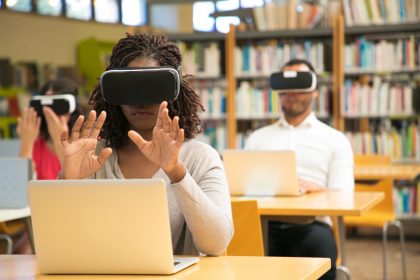Over the past decade, education has shifted from being defined by textbooks and lecture halls into a dynamic ecosystem driven by emerging technologies. The tools shaping this transformation are no longer speculative experiments—they are present in classrooms, training programs, online courses, and even everyday self‑study apps. Chief among these innovations are artificial intelligence (AI), virtual and augmented reality (VR/AR), and data‑driven personalization systems that leverage real‑time analytics to tailor learning experiences in ways unthinkable only a generation ago. These developments are not simply add‑ons to existing instruction but are increasingly becoming foundational elements of how knowledge is delivered, processed, and retained.
Artificial Intelligence in Personalized Learning
AI‑powered tutoring systems are capable of analyzing student performance at the individual level, identifying strengths and weaknesses, and adjusting the content delivery to fill knowledge gaps. Platforms that harness AI for adaptive assessments, smart recommendations, and intelligent grading are already helping teachers manage large classrooms while still ensuring students receive individualized support. For example, an AI system can recommend practice problems for a student struggling in algebra while moving another student toward more advanced challenges, creating a paced learning experience that traditional methods cannot achieve at scale.
Immersive Learning Through VR and AR
Virtual and augmented reality bring abstraction to life by putting learners directly inside a concept. Instead of passively reading about historical civilizations or anatomical systems, students can step into simulated environments, explore 3D models, and manipulate digital objects with hands‑on interactivity. This multisensory stimulation increases engagement and retention, making abstract theories tangible. Corporations are also employing VR in workforce training—such as for pilots, engineers, or medical professionals—where practice in real conditions without risk is invaluable. These experiences are no longer futuristic—they are commercially viable tools already being integrated into teaching and skill development across sectors.
Real‑Time Feedback and the New Role of Educators
Adaptive feedback mechanisms, powered by learning management systems and performance analytics, give both students and educators instantaneous insights into progress. This real‑time loop can reduce frustration, highlight improvements, and ensure interventions occur before learners fall too far behind. Importantly, while technology takes over repetitive aspects of grading and assessment, educators are assuming roles as mentors, facilitators, and creators of environments where critical thinking and creativity flourish. Still, this transformation raises pressing questions: Will overreliance on machines reduce opportunities for human connection in learning? How can institutions ensure data privacy and fairness in AI‑driven education? And how do we avoid deepening inequities between students and regions with more or less access to these technologies?
Another profound shift lies in how technological tools are dissolving the physical and institutional boundaries that once constrained learning. Cloud‑based platforms now provide instant access to expansive libraries, interactive simulations, and live sessions that can be joined from anywhere. Students in different countries not only access the same materials but collaborate on shared projects, exchanging knowledge and perspectives across borders. Global collaboration networks, enhanced by AI‑driven translation tools, are fostering inclusive, multicultural participation in real time—reshaping classrooms into global communities of learning.
Wearable Interfaces and Ubiquitous Learning
Smart glasses, haptic feedback gloves, and other wearable devices are expanding how people interact with digital content. These technologies extend learning into everyday life—providing prompts, reminders, or skill‑based practice scenarios on the go. Such extensions of learning from formal instruction into lived environments ensure that skill acquisition becomes fluid, persistent, and contextually relevant.
Dynamic and Continuously Updated Learning Content
Educational content is no longer static. With AI‑curation and data‑driven platforms, material can be updated dynamically to reflect the latest developments in science, industry, or culture. This adaptive approach allows learning to stay relevant and responsive to the changing world rather than being tethered to outdated textbooks and rigid curricula.
Challenges for Educational Institutions
This borderless model of knowledge exchange compels educational institutions to rethink how they design curricula and measure success. Traditional lecture‑based formats struggle to compete with interactive simulations, global collaboration, and AI‑powered personalization. Universities and schools must consider not just how to use these tools but how to redefine their role in a world where students can access expertise and resources independently. Support systems must evolve to help learners navigate the overwhelming volume of available information, maintain motivation, and develop the critical thinking skills necessary to evaluate what is credible and valuable.
Looking Ahead
The integration of AI, VR/AR, intelligent tutoring systems, and global collaboration tools demonstrates that the future of education is not merely a futuristic dream—it is unfolding now. These technologies have already altered how knowledge is consumed, how skills are practiced, and how learners connect with one another across geographies and disciplines. At the same time, they bring with them challenges around ethics, equity, and the enduring need for human guidance in an age of automated personalization.
Ultimately, the role of technology in education is not to replace the human elements of curiosity, mentorship, and creativity but to amplify them. By harnessing immersive experiences, real‑time insights, and connected platforms, we are entering an era where learning is continuous, borderless, and adaptive—a vision that promises to empower learners worldwide if approached thoughtfully and inclusively.
















